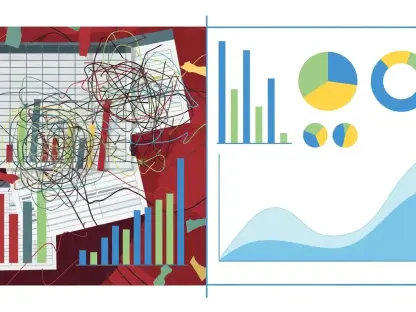In an evolving tax landscape, high-income earners and individuals with a propensity for charitable giving can face significant challenges in optimizing their tax returns. With the increased standard deduction following the Tax Cuts and Jobs Act, many taxpayers find it difficult to surpass this threshold for itemizing deductions. However, strategic financial planning can bring a solution through the method of bunching charitable contributions. This technique involves consolidating donations that would span multiple years into a single tax year, enabling one to exceed the standard deduction, thus allowing the taxpayer to itemize and potentially save significantly on taxes.
Understanding the Basics of Deductions and the Role of Bunching
The fundamental principle behind deductions in the U.S. tax system revolves around reducing taxable income, which in turn lowers the tax burden. There are two primary methods: the standard deduction and itemized deductions. The standard deduction offers a fixed dollar amount that reduces overall taxable income, whereas itemized deductions involve listing specific expenses, including charitable donations, to decrease taxable income. The Tax Cuts and Jobs Act significantly increased the standard deduction, making it challenging for many taxpayers to benefit from itemized deductions under normal circumstances.
Bunching becomes a powerful strategy within this context by allowing individuals, especially high-income earners and households near the itemization threshold, to consolidate their charitable contributions. For instance, instead of making regular yearly donations, they can amass several years’ worth of donations into one year. This approach makes the total charitable contributions in that specific year substantial enough to exceed the standard deduction, thus enabling itemization. By doing so, taxpayers can potentially increase their itemized deductions and reduce their taxable income more effectively than if they were to spread their contributions evenly across several years.
Key Strategies for Effective Bunching
One impactful strategy involves the use of Donor-Advised Funds (DAFs). Donor-Advised Funds allow individuals to make a substantial charitable contribution in one year, taking advantage of the resulting large deduction. The donor can then distribute the funds to various charities over time, maintaining flexibility in their giving schedule. This allows for immediate tax benefits while also providing the donor with the ability to support their chosen causes at their own pace. Donor-Advised Funds offer a balance between maximizing tax savings and making intentional, impactful donations without the rush of year-end deadlines.
Another benefit comes from donating appreciated assets, known as donations in kind. This approach offers dual tax advantages: avoiding capital gains tax on the appreciation of the donated assets and receiving a charitable deduction based on their fair market value. This method can be especially advantageous for those holding significant investments. By donating assets that have appreciated over time, donors not only reduce their taxable income through the charitable deduction but also avoid the capital gains tax they would owe if they sold the assets first and then donated the proceeds.
Enhancing Bunching with Qualified Charitable Distributions
Qualified Charitable Distributions (QCDs) present another effective way to leverage bunching, particularly for retirees aged 70½ and older. Through QCDs, retirees can contribute directly from their Individual Retirement Accounts (IRAs) to qualifying charities, up to a specified limit each year. These contributions count toward the Required Minimum Distributions (RMDs) that retirees must take from their IRAs. Notably, the amount donated through a QCD is excluded from taxable income, offering a significant tax benefit even without itemizing deductions.
This approach aligns well with retirees’ charitable intentions while ensuring compliance with RMD requirements and reducing taxable income. By using QCDs, retirees can get a direct tax benefit from their charitable contributions, effectively combining their philanthropic goals with tax-efficient financial planning. For those who may not surpass the standard deduction threshold through regular charitable contributions, QCDs offer a means to achieve tax advantages through their charitable giving directly from their retirement accounts.
Strategic Timing and Planning for Optimal Results
Strategically timing charitable contributions and aligning them with financial planning can significantly enhance tax savings. High-income earners, households near the itemization threshold, and those with fluctuating incomes can benefit from planning their charitable giving over a span of years. By doing so deliberately, they can maximize the impact of bunching and achieve more substantial tax savings. Effective financial planning includes evaluating the best years to consolidate donations, considering factors such as anticipated fluctuations in income or large, one-time financial events that could impact deductions and tax liabilities.
By understanding and implementing bunching strategies, individuals can optimize their charitable contributions to better align with both their financial and philanthropic goals. This requires assessing financial circumstances, planning contributions accordingly, and choosing the appropriate methods, such as Donor-Advised Funds, donations in kind, or Qualified Charitable Distributions. With thoughtful, strategic planning, taxpayers can ensure their charitable intentions yield the maximum possible benefit for both their chosen causes and their tax situation.
Path Forward: Aligning Charitable and Financial Goals
In today’s changing tax environment, high-income individuals and those inclined to give generously to charity often encounter significant challenges when trying to optimize their tax returns. The Tax Cuts and Jobs Act’s increase in the standard deduction has made it harder for many to exceed this threshold for itemized deductions. Nevertheless, through thoughtful financial planning, there is a potential solution: bunching charitable contributions. This strategy involves consolidating donations that you would normally spread over several years into one tax year. By doing so, you can surpass the standard deduction, allowing you to itemize deductions and potentially save a considerable amount on taxes. This method can not only reduce your taxable income for that year but also provide a more substantial tax benefit compared to spreading donations over multiple years. Employing such strategies requires careful planning, but they can significantly enhance the tax efficiency of your charitable giving, making your generosity work more effectively both for you and the causes you support.









